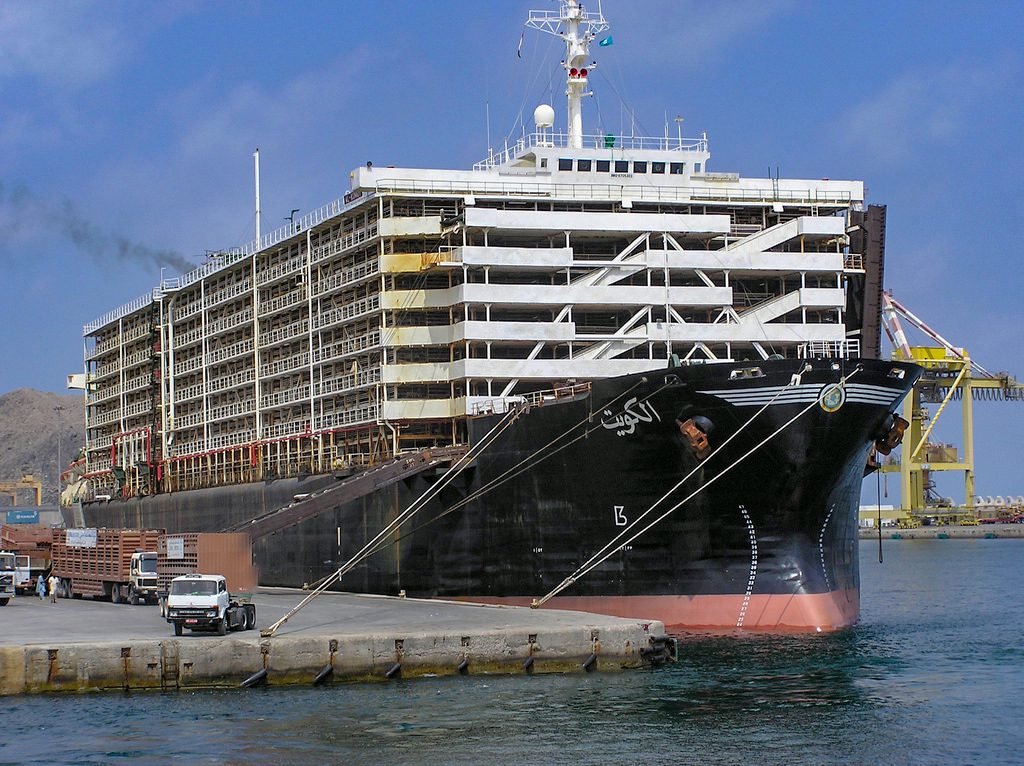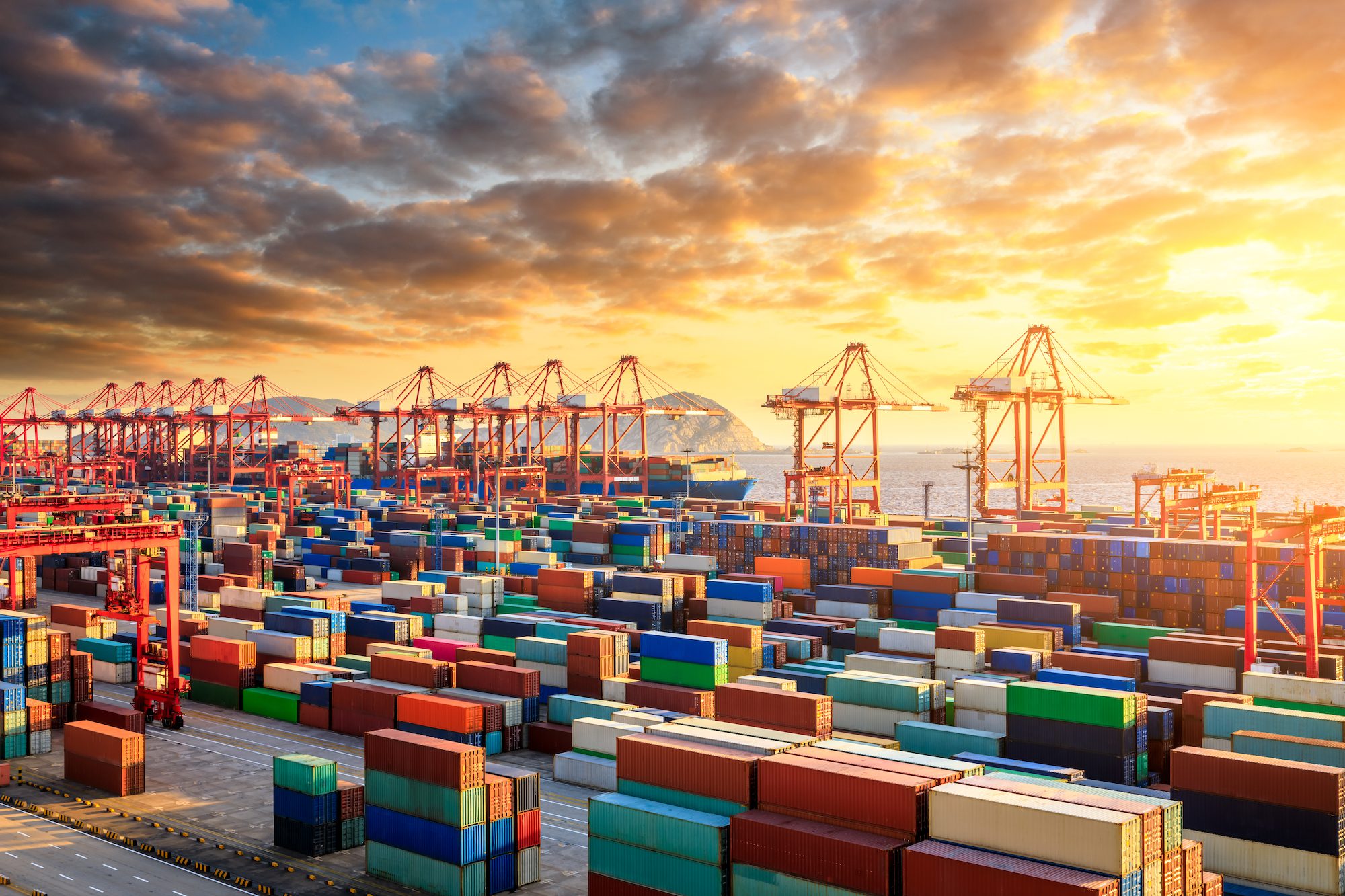By Michael Hirtzer (Bloomberg) – Of all the millions of tons of cargo that’s piled up in the Suez Canal, none is more delicate than the animals crammed into the hulls of several of the livestock ships.
Little information is available, with neither canal officials nor shipping executives willing to talk, but data compiled by Bloomberg indicate as many as 10 vessels stuck in and around the canal could be carrying thousands of livestock. Given the Europe-to-Saudi Arabia itinerary, they are most likely carrying sheep. Seven of the ships, headed for Jordan, have 92,000 livestock on board.
While much of the waylaid cargo is commodity products such as oil that can be stored on ships for long periods, livestock need food and water, and such deliveries usually carry only enough for a few extra days. That could create a critical situation for ships to find feed supplies at a local port, or force them to turn around. Dislodging the vessel blocking the canal may take at least a week, longer than initially feared, people familiar with the matter said.
“I wouldn’t expect just after a two-day delay for a problem to have built up,” said Peter Stevenson, chief policy officer at animal-welfare group Compassion in World Farming, which has called for an end to the live-animal shipments. “It’s as time goes by that the problems get worse. Occasionally, there are real scandals when things go wrong, but it’s a day-to-day horror.”
Cattle can also be transported by sea, and ships would generally have at least two or three days’ worth of extra hay or feed on board, said Bob Bishop, president of the Livestock Exporters Association of the USA. If the feed runs out, they could get more from a port while refueling. A ship that can’t get to dock could get feed from a barge in what’s known as “midstream loading,” he said.
Seven livestock vessels that were due to arrive to Aqaba on March 21 are stranded near the Suez Canal, Captain George Dahdal, Representative of Jordan Navigation Syndicate, said by phone.
Weighing Options
“If you’re getting low on feed, I would look at coming into port and putting on extra feed,” Bishop said by phone from New York. “If I was the owner of the sheep, I would try to find a country that needed sheep,” he added. “The shorter route would be back to Romania.”
At least 10 vessels designed to ship animals are parked near the shuttered canal, and several appear to be en route between Romania and Saudi Arabia, according to ship data compiled by Bloomberg. The ones departing the European country are likely carrying sheep, which Saudi Arabia purchases so that the animals can be slaughtered according to religious preferences. Those traveling the other direction could be empty vessels.
The Middle Eastern nation is the world’s largest sheep importer by a wide margin, United Nations data shows. But the trade route has faced disaster at times. About 14,000 sheep being shipped from Romania to Saudi Arabia were killed when a vessel partly capsized in 2019, according to media reports at the time. Rescuers were only able to save a a little over 200 animals.
Risks En Route
Vessels that crowd thousands of sheep and longer journeys raise the risk of disease and stress, said Stevenson of the animal welfare group. Some ships used to transport animals also have been converted from other purposes and aren’t ideally suited, he said. It can be difficult to reverse course after departure due to health rules.
Bishop said mortality rates for livestock generally are no higher at sea than on land, with most ships having a veterinarian.
A U.S. shipment of dairy cattle left the Texas port of Galveston late last year en route to Pakistan via the Suez, according to Bishop. Another recent shipment of U.S. cattle sailed from the West Coast to Pakistan, avoiding the Suez due to tolls, he said.
“After this container ship, you might see more and more of that,” he said.(Adds detail of stuck vessels headed for Jordan in second paragraph)
By Michael Hirtzer, Megan Durisin and Sergio Chapa, With assistance from Mohammad Tayseer. Copyright © 2021 Bloomberg

 Join The Club
Join The Club











